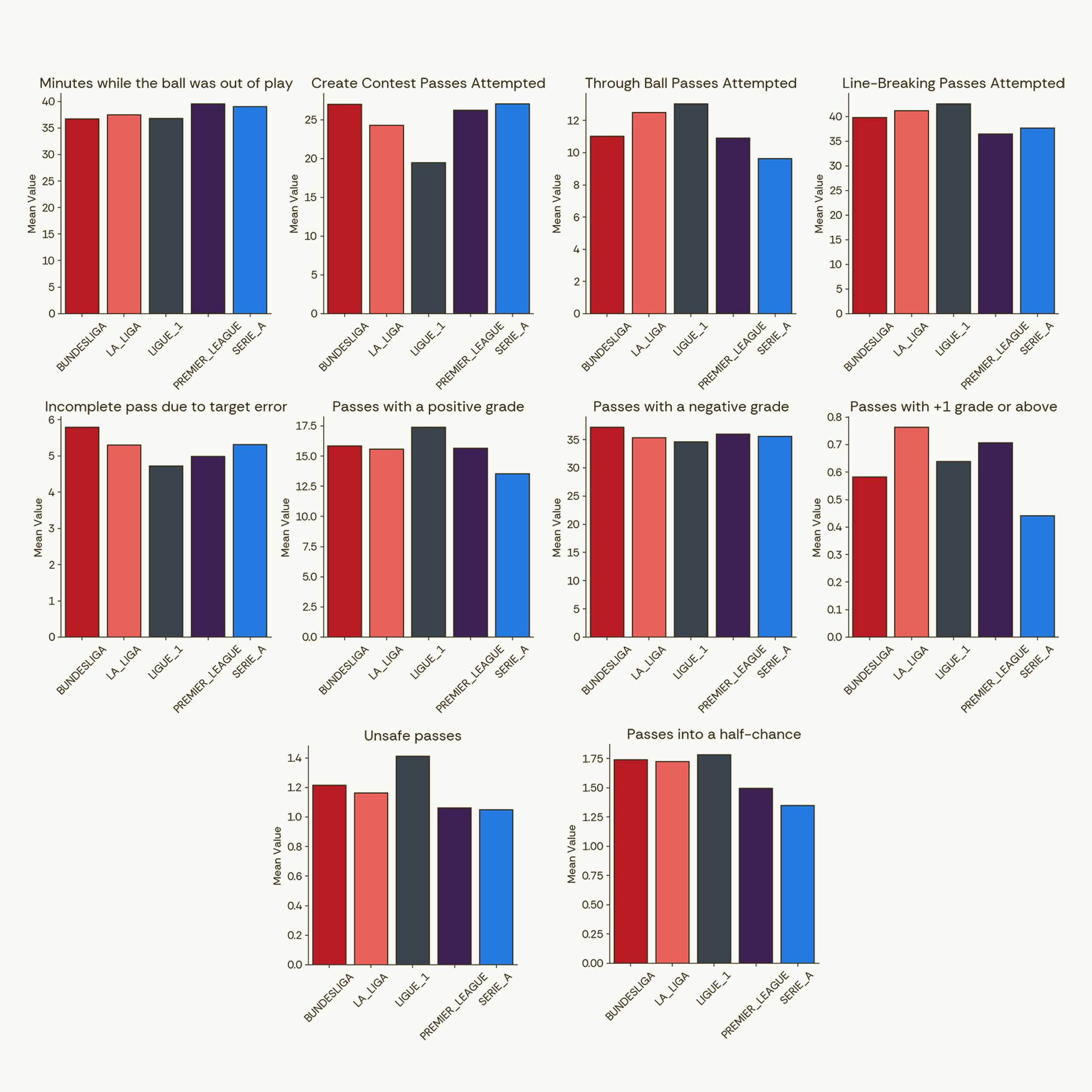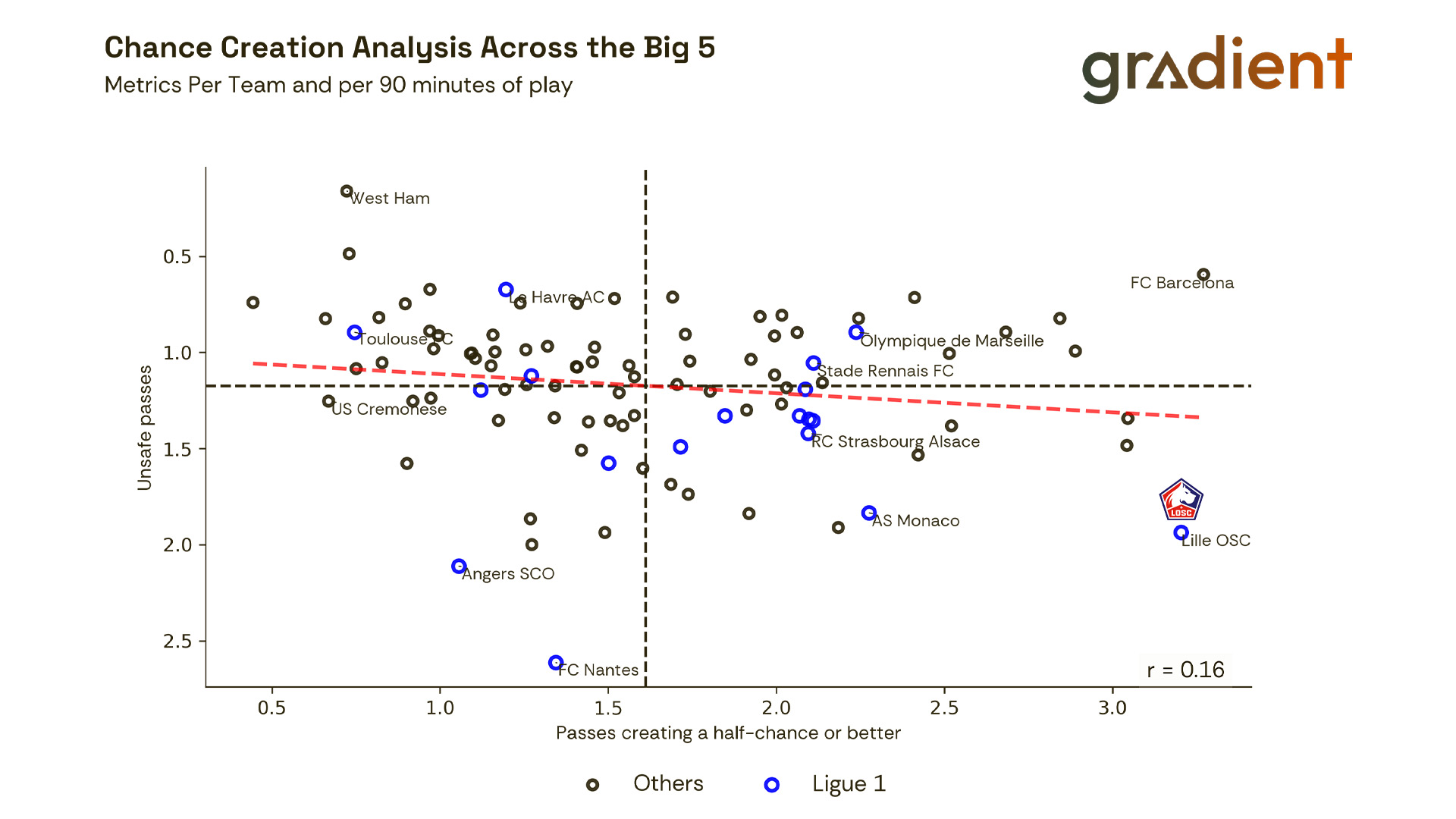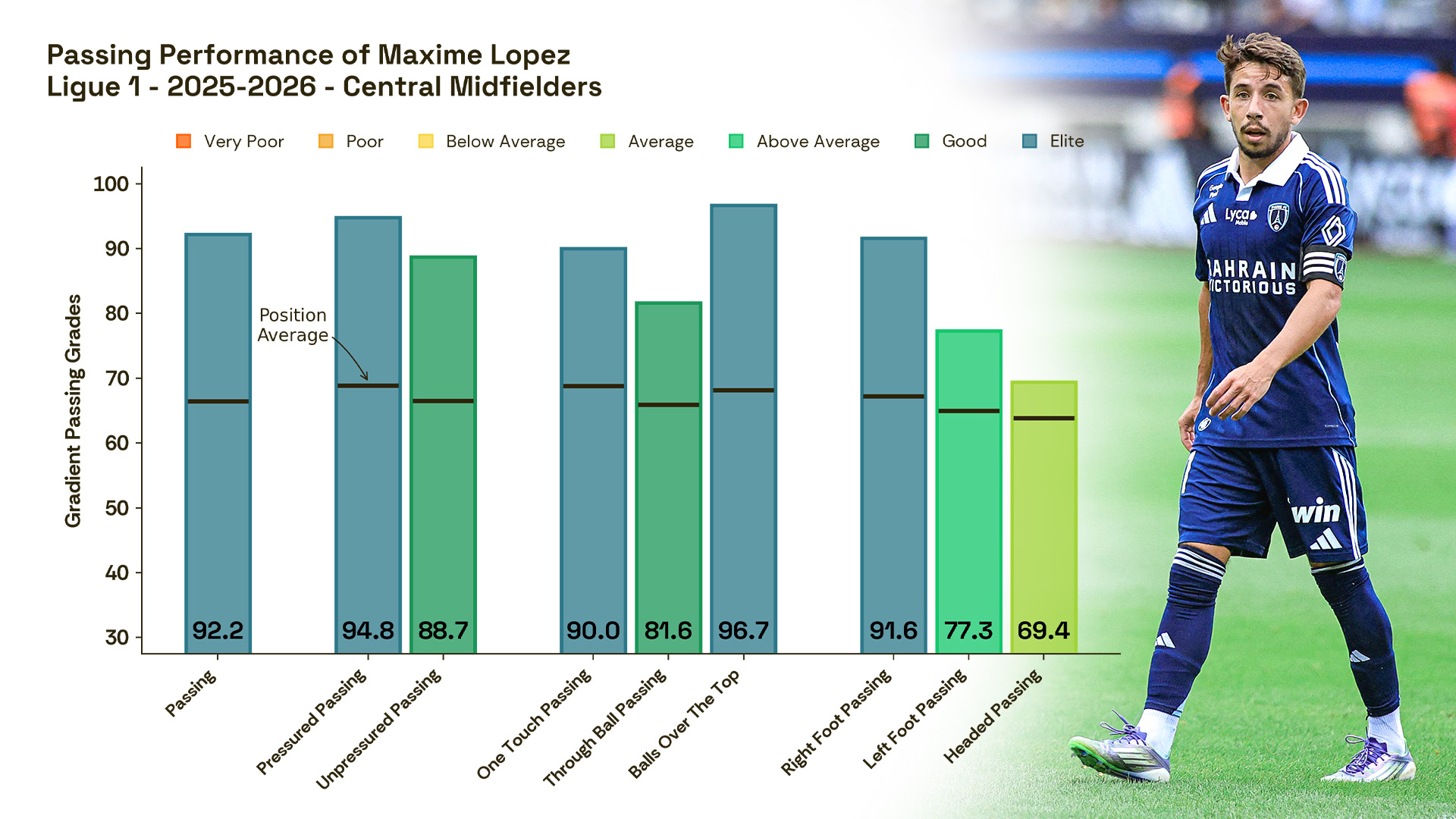November 25, 2025
Inside Ligue 1's Unique Passing Profile Across Europe’s 'Big Five' Leagues

When we compare the passing metrics across the big five European leagues, one competition in particular stands apart. Ligue 1 shows a distinct profile in how teams move the ball, create chances and manage risk.

From the league comparison, we can see the ball spends slightly less time out of play. There are far fewer attempts to hit long passes that create aerial contests down the field, and a greater willingness to attempt through balls and line-breaking passes. Ligue 1 also records more passes that lead to half-chances or better, and benefits from fewer incomplete passes caused by target errors such as misjudged movement or failing to control the ball. All of this contributes to a higher volume of positively graded passes and a lower volume of negatively graded ones.
Before we crown Ligue 1 as the best passing league in Europe, we need to look at the +1 and unsafe passes bar charts. When isolating passes graded at +1 or higher, which usually represent well executed passing (for more detail on the grading scale, read this), Ligue 1 delivers a strong total but still trails La Liga and the Premier League. More importantly, the reluctance to play long passes results in more unsafe passes, which are the actions that leave teams exposed in dangerous areas. In short, the metrics describe a league that is entertaining, technically confident and proactive, but one that may lack the intensity and physical edge seen in the Premier League.
A good example of the Ligue 1 trends above is Lille. They occasionally concede possession in dangerous zones, but their chance creation more than compensates. Lille produce by far the most half-chances or clear chances in Ligue 1 and finish just behind Barcelona when comparing the big five leagues.

When examining the balance of positive and negative pass grades, Lille still show a strong volume of positive actions. Lyon and Marseille are efficient at avoiding downgrades while remaining above average in positively graded passes. PSG, as expected, sits near the top in both metrics. The chart below also highlights that no Ligue 1 team ranks near the bottom in either negative or positive pass grades, which speaks to the overall technical standard within the division.

Despite not being one of the teams that dominate the pass grade charts, Paris FC feature two players who lead the league in overall passing grade. Maxime Lopez tops the list with a 92.2 overall grade, followed by Ilan Kebbal at 91.3. Lopez shows strong passing across all categories in his breakdown, but his main weapon is his over-the-top passing, where he holds an exceptional 96.7 grade, which becomes increasingly valuable given the reluctance of teams playing those types of balls in the league.

Vitinha is another standout in over-the-top passing. He ranks second with a grade of 95.7 and records more +1 graded passes, which typically require higher precision or difficulty. This should not take away from Lopez, whose percentage of +0.5 grades is well above league average and whose negative grades are well below average. His consistency is also maintained over a slightly larger sample size (51 over-the-top passes compared to Vitinha’s 37). Over-the-top passes tend to produce more negative grades than positive ones due to their difficulty, so maintaining such a strong distribution at high volume is impressive.

As mentioned earlier, Ligue 1 produces more through balls than other major leagues. The player who stands out in both overall passing grade and through-ball passing grade is Lille’s winger, Félix Correia. With a 91.1 overall passing grade and a league-leading 90.7 through-ball grade, he has been central to Lille’s ability to create half-chances and clear chances from passes.

Overall, the data highlights a league defined by technical ambition, risk-taking and a commitment to progressive passing. While Ligue 1 may not match the physicality or long-pass efficiency of the Premier League, its willingness to attack through tight spaces and create high-value opportunities makes it one of Europe’s most intriguing competitions from a passing perspective. The performances of players like Lopez, Kebbal, Vitinha and Correia only strengthen the case that Ligue 1 continues to develop some of the continent’s most refined passers.



